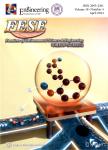Magnitude and direction of temperature variability affect hospitalization for myocardial infarction and stroke:population-based evidence from Guangzhou,China
作者机构:State Key Laboratory of Organ Failure ResearchDepartment of BiostatisticsGuangdong Provincial Key Laboratory of Tropical Disease ResearchSchool of Public HealthSouthern Medical UniversityGuangzhou 510515China Guangzhou Center for Disease Control and PreventionGuangzhou 510440China
出 版 物:《Frontiers of Environmental Science & Engineering》 (环境科学与工程前沿(英文))
年 卷 期:2024年第18卷第3期
页 面:1-11页
核心收录:
学科分类:0830[工学-环境科学与工程(可授工学、理学、农学学位)] 1002[医学-临床医学] 10[医学]
基 金:supported by the National Natural Science Foundation of China(Nos.82373679 and 81973140).
主 题:Hourly temperature variability Cardiovascular Hospitalization Direction China
摘 要:Relationships between nonoptimal temperatures and cardiovascular disease(CVD)mortality have been well documented.However,evidence of the association between temperature variability(TV)and CVD morbidity is limited.This study aimed to quantify the risk and burden of CVD-related hospitalization associated with the magnitude and direction of TV.Data on meteorology and population-based hospitalizations for myocardial infarction(MI)and stroke were collected in Guangzhou,China,from 2013 to 2017.Hourly temperature variability(HTV)was measured as the standard deviation of hourly temperature records over specific exposure days.The direction(upward or downward)of HTV was defined as the average daily mean temperature change relative to that of the previous day during the exposure period.Quasi-Poisson regression was applied to assess the impact of HTV after adjusting for the daily mean temperature,and the hospitalization fractions attributable to HTV were calculated.A 1℃-increase in HTV was significantly associated with a 2.24%and 1.72%increase in hospitalizations for MI and hemorrhagic stroke(HS)at lag 0–1 d,respectively,and a 1.55%increase in hospitalizations for ischemic stroke(IS)at lag 0–3 d.During the study period,5.99%,4.64%,and 4.53%of MI,HS,and IS hospitalizations,respectively,were attributable to HTV.The upward TV exerts acute effects on CVD hospital admissions,whereas the impact of downward TV generally lags.These findings highlight the importance of the magnitude and direction of temperature fluctuations,in addition to the mean level,in assessing the adverse health impacts of temperature variations.



